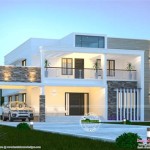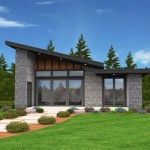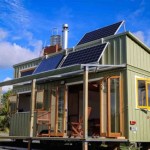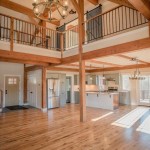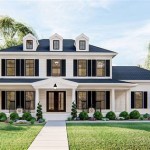A house plan below 1000 sq ft refers to a design for a residence with a total living area of less than 1000 square feet. These plans are commonly employed in the construction of compact and efficient homes, such as starter homes, downsized residences for seniors, or vacation cabins.
House plans below 1000 sq ft prioritize space optimization and functionality. By carefully allocating the available area, architects and designers create layouts that maximize comfort and livability, ensuring that each room serves multiple purposes and transitions seamlessly into the next.
In the following paragraphs, we will delve into the key considerations and advantages of house plans below 1000 sq ft, exploring their design principles, suitability for various lifestyles, and the benefits they offer in terms of affordability, energy efficiency, and environmental sustainability.
When considering house plans below 1000 sq ft, several key points are worth noting:
- Compact and efficient
- Prioritize space optimization
- Maximize comfort and livability
- Versatile and adaptable
- Affordable to build and maintain
- Energy efficient and sustainable
- Suitable for various lifestyles
- Starter homes for first-time buyers
- Downsized residences for seniors
- Vacation cabins and guest houses
These plans offer numerous advantages, including affordability, reduced energy consumption, and a smaller environmental footprint, while still providing comfortable and functional living spaces.
Compact and efficient
Compact and efficient house plans below 1000 sq ft prioritize space optimization and functionality. Every square foot is utilized wisely, ensuring that each room serves multiple purposes and transitions seamlessly into the next. Designers employ clever layouts and innovative storage solutions to maximize comfort and livability within a limited footprint.
- Open floor plans: Open floor plans combine living, dining, and kitchen areas into one cohesive space, creating a sense of spaciousness and allowing for multiple functions to occur simultaneously.
- Multi-purpose rooms: Rooms can be designed to serve dual purposes, such as a guest room that doubles as an office or a living room that incorporates a dining area.
- Built-in storage: Built-in shelves, cabinets, and drawers make use of vertical space and provide ample storage without encroaching on the living area.
- Smart furniture: Furniture pieces with built-in storage, such as ottomans with hidden compartments or beds with drawers, maximize functionality and minimize clutter.
By embracing these space-saving techniques, house plans below 1000 sq ft offer comfortable and functional living spaces without sacrificing style or livability.
Prioritize space optimization
House plans below 1000 sq ft prioritize space optimization through careful planning and innovative design techniques. Every square foot is utilized to maximize functionality and livability, ensuring that the home feels spacious and comfortable despite its compact size.
Open floor plans are a key strategy for creating a sense of spaciousness. By combining living, dining, and kitchen areas into one cohesive space, designers can eliminate walls and create a more open and airy atmosphere. This layout promotes natural light flow and allows for multiple functions to occur simultaneously, making the most of the available space.
Multi-purpose rooms are another effective way to optimize space in small homes. Rooms can be designed to serve dual purposes, allowing for greater flexibility and functionality. For example, a guest room can double as an office, or a living room can incorporate a dining area. By carefully considering the needs of the occupants, designers can create versatile spaces that adapt to changing needs and lifestyles.
Built-in storage is essential for maximizing space utilization in compact homes. By incorporating built-in shelves, cabinets, and drawers, designers can make use of vertical space and minimize clutter. These built-in features provide ample storage without encroaching on the living area, ensuring that the home remains organized and functional.
Smart furniture can also contribute to space optimization. Furniture pieces with built-in storage, such as ottomans with hidden compartments or beds with drawers, maximize functionality and minimize clutter. By choosing furniture that serves multiple purposes, homeowners can reduce the need for additional storage units and maintain a sense of spaciousness.
Maximize comfort and livability
Efficient space planning
Efficient space planning is crucial for maximizing comfort and livability in house plans below 1000 sq ft. Every square foot must be utilized wisely to create a sense of spaciousness and ensure that each room serves multiple purposes. Open floor plans, multi-purpose rooms, built-in storage, and smart furniture are effective strategies for optimizing space and enhancing functionality.
Natural light and ventilation
Natural light and ventilation play a vital role in creating a comfortable and inviting living environment. House plans below 1000 sq ft often incorporate large windows and skylights to maximize natural light penetration. Cross-ventilation is also important, allowing fresh air to circulate throughout the home and reducing the need for artificial lighting and ventilation systems.
Smart storage solutions
Smart storage solutions are essential for maintaining a clutter-free and organized home, especially in compact spaces. Built-in shelves, cabinets, and drawers make use of vertical space and minimize clutter. Multi-purpose furniture, such as ottomans with hidden compartments or beds with drawers, also contribute to space optimization and functionality.
Comfortable and inviting spaces
Despite their compact size, house plans below 1000 sq ft can offer comfortable and inviting living spaces. Careful attention to detail and thoughtful design choices can create a sense of warmth and coziness. The use of natural materials, soft furnishings, and well-chosen dcor can transform a small space into a comfortable and welcoming home.
Versatile and adaptable
House plans below 1000 sq ft offer remarkable versatility and adaptability, allowing homeowners to customize their living spaces to suit their unique needs and lifestyles.
- Flexible layouts: Open floor plans and multi-purpose rooms provide the flexibility to arrange furniture and create different zones within the home. This adaptability allows homeowners to adjust the layout as their needs change, whether they require more space for entertaining, a dedicated home office, or a growing family.
- Reconfigurable spaces: Movable walls, partitions, and screens can be used to create temporary or permanent room divisions, offering the flexibility to transform the home’s layout as needed. This reconfigurability allows homeowners to adapt their living spaces to accommodate changing needs or preferences.
- Multi-generational living: House plans below 1000 sq ft can be designed to accommodate multi-generational living, with separate spaces for elderly parents or adult children. This adaptability ensures that the home can evolve to meet the changing needs of a growing family.
- Sustainable design: Compact house plans are inherently more sustainable, requiring fewer resources to build and maintain. They are also more energy-efficient, reducing utility costs and environmental impact. This adaptability to sustainable living makes these homes appealing to environmentally conscious homeowners.
The versatility and adaptability of house plans below 1000 sq ft make them an attractive option for homeowners seeking a compact, functional, and customizable living space.
Affordable to build and maintain
House plans below 1000 sq ft offer significant cost savings in both construction and maintenance compared to larger homes. Their compact size requires less materials and labor to build, reducing the overall construction costs. Additionally, their energy efficiency and reduced maintenance needs result in lower ongoing expenses, making them an attractive option for budget-conscious homeowners.
- Lower material and labor costs: The smaller footprint of house plans below 1000 sq ft translates to reduced material requirements, such as lumber, roofing, and siding. Additionally, the simplified design and smaller size require less labor to construct, resulting in lower overall construction costs.
- Energy efficiency: Compact homes have a smaller surface area, which reduces heat loss and gain. This inherent energy efficiency leads to lower energy consumption for heating and cooling, resulting in reduced utility bills and long-term savings.
- Reduced maintenance costs: The smaller size of house plans below 1000 sq ft means less maintenance is required. Exterior maintenance, such as painting and repairs, is less time-consuming and less expensive. Additionally, the reduced number of rooms and fixtures means lower costs for cleaning, repairs, and replacements.
- Sustainable design: Compact homes are inherently more sustainable, requiring fewer resources to build and maintain. By reducing energy consumption and waste production, they contribute to a greener and more environmentally conscious lifestyle.
The affordability of house plans below 1000 sq ft makes them an attractive option for first-time homebuyers, retirees, and those seeking a cost-effective and sustainable living solution.
Energy efficient and sustainable
Reduced energy consumption
House plans below 1000 sq ft inherently consume less energy compared to larger homes. Their compact size reduces the surface area exposed to the elements, minimizing heat loss and gain. This reduced thermal transfer leads to lower energy consumption for heating and cooling, resulting in significant savings on utility bills.
Passive design strategies
Passive design strategies play a crucial role in enhancing the energy efficiency of house plans below 1000 sq ft. These strategies harness natural resources to reduce energy consumption and create a more comfortable living environment. Techniques such as proper orientation to maximize solar gain, natural ventilation for cross-breezes, and the use of thermal mass to regulate indoor temperatures contribute to a more sustainable and energy-conscious home.
Sustainable materials and construction practices
The choice of materials and construction practices can significantly impact the environmental sustainability of house plans below 1000 sq ft. Utilizing sustainable materials, such as recycled or locally sourced products, reduces the carbon footprint of the home. Additionally, incorporating energy-efficient appliances, lighting, and insulation further enhances the home’s overall sustainability.
Reduced waste production
The compact nature of house plans below 1000 sq ft contributes to reduced waste production during construction and throughout the life of the home. Less material is required for construction, and the smaller size generates less waste during maintenance and renovations. By embracing sustainable practices and reducing waste, these plans promote a more environmentally conscious and responsible approach to homeownership.
Suitable for various lifestyles
First-time homebuyers
House plans below 1000 sq ft are an ideal choice for first-time homebuyers who may have budget constraints or prefer a more manageable living space. These compact homes offer affordability, energy efficiency, and low maintenance costs, making them an attractive option for those starting their homeownership journey.
Downsizing seniors
As seniors seek to simplify their living arrangements, house plans below 1000 sq ft offer a comfortable and practical solution. These homes provide single-level living, reduced maintenance requirements, and accessible features that cater to the needs of aging individuals. They allow seniors to maintain their independence and enjoy a safe and comfortable living environment.
Vacation homes and guest houses
The compact size and affordability of house plans below 1000 sq ft make them well-suited for vacation homes or guest houses. They provide a cozy and functional space for and entertaining guests without the burden of excessive space and maintenance. These homes can be customized to fit specific needs, such as incorporating outdoor living areas or creating a separate space for guests.
Sustainable living
Individuals seeking a more sustainable lifestyle can find that house plans below 1000 sq ft align with their values. These compact homes require fewer resources to build and maintain, reducing their environmental impact. By incorporating eco-friendly materials and energy-efficient features, these plans promote a responsible and sustainable approach to homeownership.
Starter homes for first-time buyers
Affordability and financial feasibility
One of the primary advantages of house plans below 1000 sq ft for first-time buyers is their affordability. These compact homes typically require less land and fewer materials to build, resulting in lower construction costs. Additionally, their smaller size and energy efficiency lead to reduced utility bills, making them more manageable for individuals with limited financial resources. This affordability allows first-time buyers to step onto the property ladder without taking on excessive debt or financial strain.
Manageability and low maintenance
For first-time homebuyers, the manageability and low maintenance requirements of house plans below 1000 sq ft can be highly appealing. These homes are easier to clean and maintain compared to larger properties, requiring less time and effort to keep them in good condition. The reduced number of rooms and smaller yard space mean that first-time buyers can spend less time on upkeep and more time enjoying their new home. This is particularly beneficial for busy individuals or those with limited time for home maintenance.
Customization and personalization
Despite their compact size, house plans below 1000 sq ft offer flexibility and customization options that allow first-time buyers to personalize their living space. Open floor plans and multi-purpose rooms provide the freedom to arrange furniture and create different zones within the home. Additionally, these plans can be modified to incorporate personal preferences, such as adding a home office, expanding the kitchen, or creating a dedicated outdoor living area. This customization ensures that first-time buyers can create a home that meets their specific needs and lifestyle.
Investment potential and future value
While house plans below 1000 sq ft may be initially perceived as less valuable compared to larger homes, they can offer significant investment potential for first-time buyers. The affordability and low maintenance costs of these homes make them attractive to a wider pool of potential buyers in the future. Additionally, as land becomes increasingly scarce and housing prices continue to rise, the demand for compact and efficient homes is expected to grow, potentially increasing the value of these properties over time. This investment potential provides first-time buyers with a solid financial foundation and the opportunity to build equity in their home.
Downsized residences for seniors
Comfortable and accessible living
House plans below 1000 sq ft offer a comfortable and accessible living environment for seniors who are downsizing from larger homes. These compact homes are designed to minimize unnecessary space while maximizing functionality and livability. Open floor plans, wide doorways, and accessible features, such as walk-in showers and grab bars, ensure that seniors can move around their home safely and comfortably. Additionally, single-level living eliminates the need for stairs, reducing the risk of falls and injuries.
Reduced maintenance and expenses
Downsizing to a house plan below 1000 sq ft can significantly reduce maintenance requirements and expenses for seniors. The smaller size means less space to clean, fewer rooms to maintain, and a smaller yard to care for. This reduced maintenance burden allows seniors to spend less time on upkeep and more time enjoying their retirement years. Additionally, the energy efficiency of these compact homes leads to lower utility bills, further reducing living expenses for seniors on a fixed income.
Social engagement and community involvement
House plans below 1000 sq ft can be found in various communities, including those designed specifically for seniors. These communities often offer amenities and activities that promote social engagement and community involvement. Seniors living in these homes have the opportunity to participate in group activities, attend social events, and connect with like-minded individuals. This social interaction can help reduce feelings of isolation and loneliness, which are common among older adults.
Financial benefits and peace of mind
Downsizing to a house plan below 1000 sq ft can provide significant financial benefits for seniors. The reduced construction and maintenance costs, as well as lower utility bills, free up more disposable income for seniors to spend on other expenses or investments. Additionally, the smaller size of these homes can reduce property taxes and insurance premiums, further easing the financial burden on seniors. This financial peace of mind allows seniors to enjoy their retirement years without worrying about excessive housing costs.
Vacation cabins and guest houses
House plans below 1000 sq ft are also well-suited for vacation cabins and guest houses. Their compact size and affordability make them an attractive option for those seeking a cozy and functional retreat or a comfortable space to accommodate guests.
- Affordability and cost-effectiveness: Vacation cabins and guest houses below 1000 sq ft are typically more affordable to build and maintain compared to larger structures. This cost-effectiveness makes them a viable option for individuals or families with limited budgets who desire a vacation home or a dedicated space for guests.
- Manageability and low maintenance: The smaller size of house plans below 1000 sq ft translates to reduced maintenance requirements. These cabins and guest houses are easier to clean and upkeep, allowing owners to spend more time enjoying their vacation or hosting guests and less time on chores.
- Flexibility and customization: Despite their compact size, house plans below 1000 sq ft offer flexibility and customization options. Open floor plans and multi-purpose rooms provide the freedom to arrange furniture and create different zones within the home. Additionally, these plans can be modified to incorporate personal preferences, such as adding a loft for additional sleeping space or expanding the kitchen for more cooking and dining area.
- Sustainability and eco-friendliness: House plans below 1000 sq ft can be designed with sustainability in mind. By incorporating energy-efficient features, utilizing sustainable materials, and minimizing waste during construction, these cabins and guest houses can have a reduced environmental impact. This eco-friendly approach aligns with the desire for responsible and sustainable vacationing.
Overall, house plans below 1000 sq ft offer a practical and cost-effective solution for those seeking a vacation cabin or guest house. Their affordability, low maintenance requirements, flexibility, and potential for sustainability make them an attractive choice for individuals and families seeking a cozy and functional retreat or a comfortable space to accommodate guests.










Related Posts

